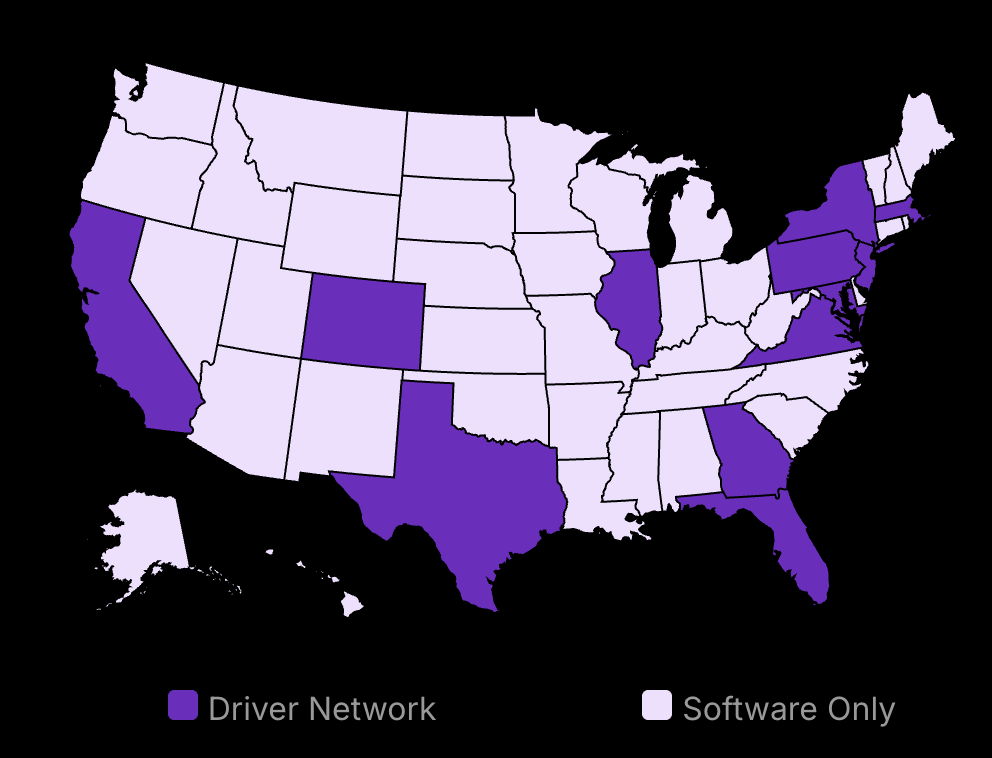Small businesses lose $550 billion annually due to customer dissatisfaction over returns. Yet implementing a no-return policy remains one of the most debated business decisions in 2024. Some companies thrive with strict no-return or refund policy rules, while others face significant customer backlash.
The truth about no-return and refund policies is complex. They can either strengthen or destroy your business relationship with customers. The key is knowing which side of this divide your business falls on.
This guide examines the real impact of no-return and refund policies on businesses in 2024.
Before you make this significant business decision, you need to understand both sides of the equation. The answer isn’t simple, but the data and examples we’ll share will help you make an informed choice for your specific situation.

Metrobi drivers are rated 4.97 out of 5
Trusted by local businesses for:
- Background-checked professionals
- Specialized in business deliveries
- Same drivers for consistency
- 4.97/5 average delivery rating
What is a No-Return Policy?
A no-return policy means you can’t return what you buy.
Sales are final: no refund policy, no exchange.
Definition and Overview
A no-return policy is a set rule that bars customers from returning items. It says all sales are final. This means no refunds or exchanges once you’ve bought an item. These no-refund policies are often used by businesses where returns might be costly or hard to manage. Examples include custom-made goods where items are personalized. In some sectors, like fast fashion, the cost of processing returns can outweigh potential profits, thus encouraging no-return or no-refund policy rules.
Example(s) of No-Return Policies
Several businesses implement no-return and no-refund policies for digital products. Clothing retailers might mark items as “All Sales Final,” especially during sales. Custom products are another instance restricted no-refund policy. Items made specifically for a buyer’s needs, such as personalized jewelry, can’t be resold to another customer easily.
Some niche shops adopt these policies to deter casual returns and manage overhead costs better. For example, boutique stores selling rare craftworks may find returns impractical and justify a no-return stance by ensuring product quality upfront.
Types of No-Return and Refund Policies
Businesses employ various types of no-return policies based on product types and industry standards. Some are absolute, while others might allow returns under specific conditions:
Strict No-Return: No circumstances allow returns. Mostly seen with custom or personalized goods.
Conditional No-Return: Exceptions occur only if the item is faulty, not merely unwanted.
Segmented Policy: Different policies for different product categories, e.g., health products vs. electronics.
Retailers like furniture makers, often facing logistics challenges, might offer a no-return policy for customized items. Other businesses may opt for a strict refund policy for segmented policies perishable items, offering returns only for non-clearance, undamaged items.
Concerns About Absence of a Return Policy
“What if a store doesn’t have a return or refund policy?” This question highlights a crucial issue for shoppers. Some assume all stores must accept returns, which isn’t always true. In practice, stores without published policies process refunds may imply no returns. Therefore, customers should always inquire or read signs for clarity on the return no refund policy.
Stores can legally have no-return and refund policies if they don’t infringe on applicable laws on consumer rights regarding defective goods. Yet, unclear policies can upset customers, so transparency is vital. It’s key for buyers to keep receipts and ensure product details match expectations at the time of purchase.
Benefits of No-Return and No-Refund Policies
Lower operating expenses. Fewer returns mean less money spent on restocking or refunding items.
Better inventory management. Easier control over stock levels with no returns.
Strengthened customer purchase decisions. Fosters careful spending, reducing buyer’s remorse.
Reduced Operational Costs
Implementing such a policy as a no-return policy can significantly cut costs. Every returned product involves multiple processes: receiving, inspecting, restocking, and reselling. This requires labor and time, inflating operational costs. In major retail settings, for example, online returns can be as high as 30% of sales, according to an article in the Harvard Business Review. By eliminating these returns, businesses can avoid the cycle of processing costs. Further reduction in expenses emerges from less need for customer service staff whose main responsibility might be handling return requests, queries, and issues. Businesses can reallocate these resources to more revenue-generating tasks.
Inventory Management Efficiency
A no-return or no-refund policy simplifies inventory management. In industries with high return rates, managing inventory can become a nightmare. Constant fluctuations in stock levels due to returns make it challenging to forecast demand accurately. This can lead to overstocking or stockouts, both detrimental to profits. A stable, inventory and accounting management pipeline ensures that purchasing strategies remain consistent. Without returns, businesses can allocate more resources to procurement plans that align closely with consumer demand patterns.
Customer Commitment to Purchases
Customer behavior can change considerably with no-return and refund policies. When customers understand that purchases are final, they tend to make more careful decisions. This cautious attitude impacts pre-purchase considerations positively. Shoppers are more likely to read product descriptions thoroughly and engage with staff to ensure they truly meet their needs. This careful decision-making can significantly decrease incidents of buyer’s remorse.
Reducing buyer’s remorse is crucial since it directly correlates with negative perceptions of a brand. Encouraging more thoughtful purchasing habits leads to more satisfied customers who are less likely to engage in impulsive buying. Businesses can achieve this by ensuring clarity and transparency in their marketing. This builds a level of trust with their customer base.
Enhanced Revenue Predictability
With no-return and refund policies, businesses can predict earnings more accurately. The uncertainty of returns can complicate financial forecasts. Inconsistent sales figures cause fluctuations that affect cash flow management and capital allocation decisions. A no-return policy stabilizes revenue streams by ensuring that sales figures reflect genuine income. Over time, this helps businesses to navigate market challenges with confidence.
Simplified Compliance and Policy Management
A no-return policy can streamline legal and compliance obligations. Managing compliant return practices often requires adhering to numerous local and international regulations, which can be complex and resource-intensive. With no returns, businesses reduce the risk of mismanaging compliance with these regulations, thus protecting against potential legal penalties.
Customer Perspective on No-Return and Refund Policies
May discourage purchases due to fear of bad buys.
Can increase trust if quality is guaranteed.
Promotes mindful shopping among buyers.
Perceived Disadvantages
The no-return policy often deters many consumers. They hesitate to buy because they fear they’ll end up stuck with something they don’t like. This worry is heightened by the risk of making a wrong choice with a product. According to research, 3 out of 4 Millennials and Gen Z shoppers shy away from brands with strict return rules. This is significant and impacts their willingness to click “buy now” on digital platforms. Customers tend to abandon carts midway when they perceive the return rules as stringent. Shockingly, 12% dropped their purchases for this reason alone.
Moreover, if a company doesn’t communicate these policies clearly, it risks earning negative reviews. Feedback platforms become a vent for disgruntled consumers, potentially harming the business’s reputation. A no-return or no-refund policy could mean battling public perceptions, where customers might feel corporations prioritize profit over customer health and safety reasons and satisfaction.
Positive Outcomes
While the no-return policy has its drawbacks, it also offers positive experiences. For businesses that ensure product quality and communicate transparency to offer refund policy alternatives, it can foster trust. When consumers feel sure of a product’s quality—backed by a clear refund policy—they are more likely to trust the brand. This refund policy may encourage sustainable shopping habits. Shoppers might be prompted to pause and consider their purchases more deeply. A reduced ability to return an item nudges consumers to think critically about what they buy.
Bridging the Gap of Store Credits
With consumer resistance evident, businesses face the challenge of finding common ground. Bridging the gap involves balancing policy enforcement with customer satisfaction. Crafting a nuanced, customer-specific approach can help. For brands, integrating flexibility in specific cases or offering store credits instead of cash refunds can reduce tension. In scenarios with high-value items, providing trial periods or comprehensive product information online can ease customer apprehensions.
This adaptive store credit strategy requires continuous feedback and adjustment. Companies must monitor policy impacts on sales data and adjust accordingly.
Fostering Loyalty Despite Constraints
Some argue that finding ways to foster loyalty amidst firm policies and refund alternatives is possible and necessary. Research shows that half of consumers lean towards brands offering free returns. Yet, retaining loyalty under strict return policies and refund requests requires deliberate efforts. Companies can offer loyalty programs or exclusive offers, creating an offsetting value. Personalization and building communities of loyal customers can buffer disappointment. Furthermore, transparent and proactive communication strengthens this bond.
Communication as a Tool
Effective communication is key to overcoming consumer resistance to no-return or refund policies. Messaging that conveys a brand’s commitment to quality can transform potential customers’ critiques into acceptance. Companies should engage consumers through regular updates on product quality, improvements, and shared values. Transparency nurtures consumer confidence, shifting the focus from policy restrictions to product benefits. Thus, communication serves as both a preventive tool and a bridge for customer understanding.
Clear and engaging talks inform customers without overwhelming them with excessive terms. This strategy matches well with clarity-focused works like “Made to Stick” by Chip Heath and Dan Heath. This book illustrates how compelling communication turns complex ideas into simple, relatable concepts. Moving forward, businesses need consistent messaging to maintain positive consumer stances and ultimately merge policy with expectation seamlessly.
Legal Considerations for No-Return or Refund Policies
Legal requirements vary by region; check local laws.
Clear policies prevent legal issues.
Even with no return, defective goods often must be accepted.
Compliance with Local Consumer Protection Laws
Understanding local laws is vital. In the U.S., federal laws do not legally require businesses to have a return policy. States like California, New York, and New Jersey, however, mandate that businesses display their return policies. Failing to do so can result in having to accept returns within 30 days. The Consumer Rights Act of 2015 in the U.K. demands a 14-day return period for online purchases. Laws about defective goods often override no-return policies. Businesses must navigate through these consumer protection laws to ensure compliance to avoid fines or legal actions.
State-Specific Regulations
In California, if you don’t display your no-return or refund policy, you must accept returns for up to 30 days. New York has a similar rule. Not only does this affect how businesses operate in these states, but it also highlights the importance of compliance.
Clear Communication with Customers
The necessity for transparency cannot be overstated. Policies must not only be visible but also comprehensible. This means placing return policy information on invoices and receipts. This communication builds trust, allowing customers to see a business as honest. A no-return policy can deter customers, but clarity mitigates this concern by setting and managing expectations effectively.
Answering Common Legal Questions
Can you fight a no-refund or refund policy? Generally, yes, if the policy doesn’t comply with local laws. A company can have a no-return policy, but it must abide by legal guidelines. Forcing a no-refund policy is often tied to legal rights for defective goods. Thus, while strict policies to refuse refunds can exist, they come with obligations. For businesses, it means walking a delicate line between policy firmness and legal adherence.
Exceptions for Defective Goods
Even with a clear no-return policy, defective goods often must be returned. It’s crucial for customer satisfaction and compliance with consumer law. Regulations universally lean towards consumer protection, ensuring customers are not stuck with defective products. This exception reflects fairness, enhancing goodwill. It’s an acknowledgment that no-return policies must balance business needs with consumer rights.
No-Return Policy Implementation Strategies
Quick setup for clarity and understanding
Prepares team for smooth execution
Ensures consistent customer interactions
Step #1: Develop a Clear Policy
The first step is creating a no-return policy that is clear. You can start by writing down the specific terms and conditions. This includes stating what products are final sale and cannot be returned. Add any exclusions, like if there are specific items that can be returned or exchanged. Identify valid reasons for exceptions to the no refund policy. These might include defects or damages during shipping.
It is best to get feedback from stakeholders. This includes managers, staff, and legal advisors. Their input will help in addressing potential problems. Keep language simple, and avoid using legal jargon to ensure all customers understand.
Once the policy is drafted, it needs testing. Conduct small customer groups to evaluate clarity. Are there questions they still have? Is there confusion? Test both in-store and online environments if needed. A thorough review at this stage can save headaches later.
Visibility and Accessibility
Ensuring the policy is accessible is important. Place the policy where customers can easily find it. Display signage at checkout points and on the checkout page of your website. It might be helpful to include a pop-up reminder during online checkout processes. You should make sure the policy is part of any sales receipt or confirmation email.
Step #2: Train Staff Effectively
Training staff is crucial to enforcing your policy. Employees need to explain the policy confidently. Start with a comprehensive training session. Cover all aspects of the policy, including exclusions and legal compliance needs. Use real-world scenarios to illustrate possible customer questions and responses.
Regular refreshers are necessary. Hold periodic training sessions. These can involve role-playing exercises to build comfort with customer challenges. Such hands-on practice ensures staff feel prepared for various customer reactions.
Management Tips/Strategies for Implementing No-Return Policies
Monitor Feedback: Regularly collect feedback from both staff and customers. Listen carefully to understand what may not be working and adjust accordingly. Patterns in feedback can highlight gaps in policy communication or execution.
Set Boundaries but Allow Flexibility: While core policy elements need to be firm, allow some room for flexibility. There could be individual cases where flexibility is necessary to maintain customer satisfaction. Have guidelines on how to identify these cases and who has the authority to make exceptions.
Leverage Technology: Use technology to aid policy enforcement. CRM systems can track customer interactions and provide reminders of policy details. Incorporate digital acknowledgments for online sales, confirming a customer’s understanding of the no-return agreement.
Through these strategies, a serious business owner can manage customer expectations effectively and implement a no-return policy while maintaining positive relationships with customers and ensuring smooth operations. To effectively support your no-return and refund policies, integrating advanced delivery management software solutions can streamline order fulfillment and improve customer satisfaction. Such software enhances transparency in shipping processes and provides real-time updates, reducing customer inquiries and building trust despite strict return rules.
Importance of No Return and Refund Policy in Business Practices
A no-return policy is a business decision that needs careful thought and clear communication. When done right, it can cut costs, simplify inventory control, and create a more sustainable business model. When done wrong, it can damage customer trust and hurt sales.
The success of a no-return policy depends on how well you execute it. You can start by studying your local laws to ensure compliance. Then, focus on clear communication with your customers – they should know exactly what they’re agreeing to before making a purchase. It is best to train your staff to explain the no refund policy with confidence and handle customer concerns professionally.
Remember that a no-return policy works best when paired with excellent product quality and detailed product descriptions. This combination helps customers make informed decisions about in-store purchases and reduces the need for returns.
Before implementing this refund policy, assess your business type, customer base, and market position. Consider starting with a trial period or applying it to specific product categories. Monitor customer feedback and sales data to measure its impact.
The key to a no-return or refund policy is finding the right balance between protecting your business interests and maintaining customer satisfaction. With proper planning and implementation, a no-return policy can benefit both your business and your customers. To further enhance your understanding of return policies, consider utilizing a comprehensive resource like a custom return policy template. This can not only streamline your process but also help build trust with your customers by ensuring clarity and professionalism. Learn more about how a tailored return policy template can boost your business’s reputation by visiting our detailed guide.
Additionally, incorporating an effective refund policy approach can significantly influence customer loyalty. Clear and customer-friendly refund policies reassure buyers, reducing hesitation during purchase decisions. This strategy not only builds trust but also enhances the overall customer experience, leading to increased retention and positive word-of-mouth. By aligning refund policies with customer expectations, your business can navigate the challenges of no-return rules more successfully.



























